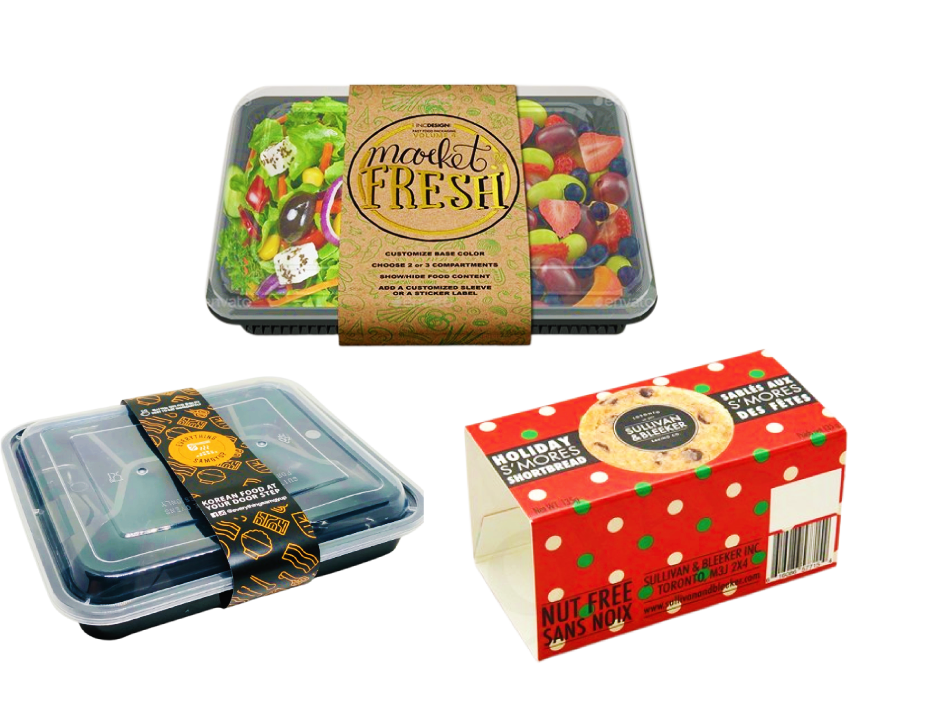Printing Food Sleeve Packaging Wholesale offers a practical solution for businesses looking to enhance their product presentation and branding while managing costs effectively. Food sleeves, which wrap around food items like snacks, beverages, and takeout meals, not only provide essential protection but also serve as a canvas for brand messaging and product information.
Understanding Food Sleeve Packaging
Food sleeves are a type of packaging that wraps around food items to provide protection and visibility. They are often made from materials like paper, plastic, or a combination of both, and can be customized to fit various products. Printing on these sleeves allows businesses to include branding elements, nutritional information, and other important details.
Benefits of Custom Printing
Custom printing on food sleeves enhances the appearance of the product and reinforces brand identity. It also allows businesses to comply with regulatory requirements by including necessary information on the packaging. Additionally, well-designed sleeves can attract customers and differentiate products in a competitive market.
Steps to Print Food Sleeve Packaging Wholesale
To print food sleeve packaging wholesale, businesses need to follow a series of steps. Each step plays a crucial role in ensuring the final product meets quality standards and aligns with business goals.
Determine Your Requirements
The first step is to clearly define your printing requirements. This includes deciding on the type of sleeve, material, size, and design. Consider the product you are packaging and the information that needs to be displayed.
- Material Selection:
Choose a material that is suitable for your food item. For instance, plastic sleeves might be better for moist foods, while paper sleeves are ideal for dry items.
- Size and Shape:
Measure the dimensions of your food item to ensure the sleeve fits properly. Consider whether you need a simple wrap or a more complex design.
Design Your Sleeve
Once you have determined your requirements, the next step is to design the food sleeve. The design process involves creating a visual layout that includes branding elements, product information, and any other relevant details.
- Graphic Design:
Use graphic design software to create the sleeve design. Make sure to include high-resolution images and clear text.
- Branding Elements:
Incorporate your logo, colors, and other brand elements to ensure the sleeve reflects your brand identity.
- Compliance Information:
Include necessary nutritional information, ingredients, and other regulatory details as required by law.
Choose a Printing Method
Selecting the right printing method is crucial for achieving the desired quality and cost-effectiveness. There are several printing methods available, each with its advantages and limitations.
- Flexographic Printing:
This method is commonly used for printing on flexible packaging materials. It offers high-speed production and is cost-effective for large runs.
- Rotogravure Printing:
Suitable for high-quality, high-volume printing, rotogravure provides excellent color consistency and sharp images.
- Digital Printing:
Ideal for shorter runs or custom designs, digital printing offers flexibility and quick turnaround times.
Select a Printing Partner
Finding a reliable printing partner is essential for ensuring the quality and consistency of your food sleeves. Look for a printer with experience in food packaging and a track record of delivering high-quality products.
- Experience and Expertise:
Choose a printer with experience in producing food packaging. This ensures they understand industry standards and regulatory requirements.
- Quality Assurance:
Ensure the printer has quality control measures in place to maintain consistency and prevent defects.
- Cost and Turnaround Time:
Compare quotes from different printers and consider their production timelines. Choose a printer that offers a balance of quality and cost-effectiveness.
Review Proofs and Samples
Before proceeding with the full production run, request proofs and samples of your food sleeves. This step allows you to review the design and make any necessary adjustments.
- Proof Review:
Carefully check the proofs for any errors or discrepancies. Ensure that all text and images are correct and that the design meets your expectations.
- Sample Evaluation:
Evaluate the samples for print quality, material durability, and overall appearance. Make sure the sleeves fit your product as intended.
Place Your Order
Once you have approved the proofs and samples, you can place your order for the full production run. Provide the printer with the final specifications and confirm the delivery schedule.
- Order Confirmation:
Confirm all details with the printer, including quantities, materials, and delivery dates.
- Payment Terms:
Review and agree on payment terms. Ensure you understand any additional costs or fees associated with the order.
Receive and Inspect the Final Product
After the printing process is complete, inspect the final product to ensure it meets your standards. Check for any defects or issues that need to be addressed.
- Quality Inspection:
Examine the printed sleeves for color accuracy, print clarity, and overall quality. Address any issues with the printer if necessary.
- Storage and Handling:
Properly store the food sleeves to prevent damage before they are used. Follow any handling instructions provided by the printer.
Conclusion
Printing food sleeve packaging wholesale involves a series of steps that require careful planning and attention to detail. By determining your requirements, designing your sleeve, choosing the right printing method, selecting a reliable printing partner, placing your order, and inspecting the final product. The latest innovations in Packaging Printing allow companies to create vibrant, high-quality designs that enhance brand visibility.


